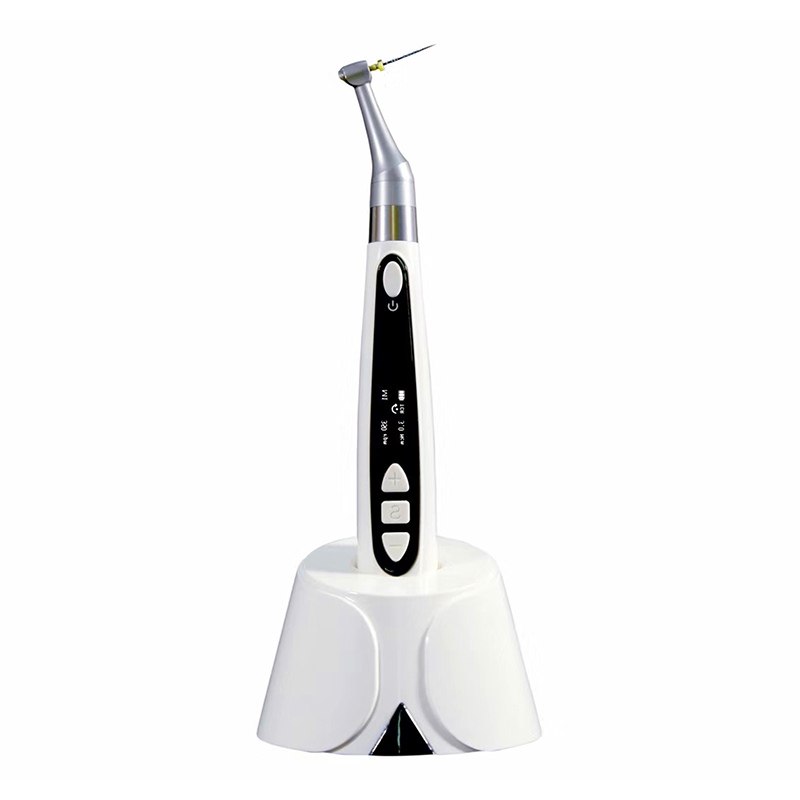The handpiece is considered a functional instrument in the dental field, and depending on its functions, there are two different types. The high-speed and the low-speed handpiece, and in this, the low-speed handpiece is the most commonly used in the dental field.
The low-dental handpiece is mainly used for the procedures like defining, shaping, trimming, smoothing, and contouring of the preps in the oral cavity. So, let’s check how the slow-speed handpiece, helps the dental field.
How does the slow-speed handpiece operate in the dental field?
As the technology and the functions of the handpiece are getting increased day-by-day, the handpiece also comes in a variety of shapes. Even though the high-speed dental handpiece seems to be more advantageous than the low-speed handpiece, still the low-speed handpiece comes in both air-driven and electric motors.
Usually, the low-speed handpiece rpm operates at a speed of fewer than 150,000 RPMs, and it will empower higher torque which will enable the higher power at a lower speed. Some of the important uses of slow-speed handpieces are refining the cavity preparation, removal of caries, performing prophylaxis, and some other endodontic and implant procedures.
Both high-speed and low-speed instruments are used as precision instruments and both will follow the same procedure. When compared with high-speed instruments, the handpiece low-speed handpiece is specially designed in a way that it will handle more pressure than the high-speed instruments.
How does it work?
The straight slow speed handpiece operates the same as the high-speed handpiece, but in this slow-speed handpiece, the airline is attached to the back of the handpiece. If the air is introduced into the handpiece, it will be forced over the vanes of the rotor, and this will cause the motor to spin.
Once the air is moved around the rotor, then the air will be forced out through the handpiece’s back and exhaust port. The speed of the handpiece will be slower, so there won’t be any additional requirements for the cooling process.
Functions and features of the slow-speed handpiece:
- The speed of the slow-speed handpiece differs a lot depending on the air supply, gear inside the motor, and the configuration of the rotor components
- When compared to the high-speed handpieces, the low-speed handpiece handles more pressure
- As the design of the low-speed handpiece is entirely different, and also it works at a low operating speed, the slow-speed handpiece will come for a longer span of time
- You will get the slow-speed handpieces in two different styles, one comes with the fixed back and the other comes with the quick disconnect style
- This type of handpiece requires frequent maintenance which should be conducted every 6 to12 months but it can be repeatedly overhauled
Types of slow-speed handpieces:
The slow-speed handpiece comes in two different types, which are electric and air-driven handpieces,
- Electric low-speed handpiece
The electric handpieces are recent technology-based handpieces, and it is mainly made of a motor and other various attachments. Depending on the size, the speed of the handpiece varies a lot. In the electric handpiece, there is also a slow-speed handpiece, mainly used in the preparation of refinement, removal of caries, and adjustment of the bridges and crowns.
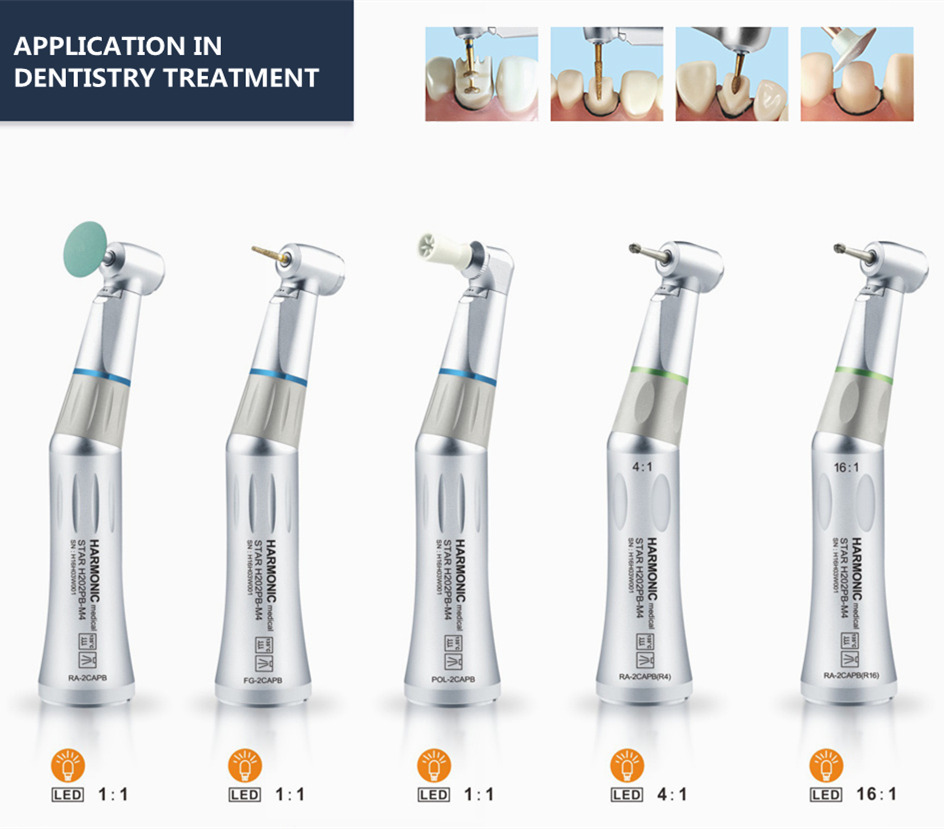
There is also an endodontic attached handpiece which is a slow-speed handpiece, and it is mainly used for root canal therapy. This is the ideal instrument for shaping and cleaning the delicate part of the root canaled tooth.
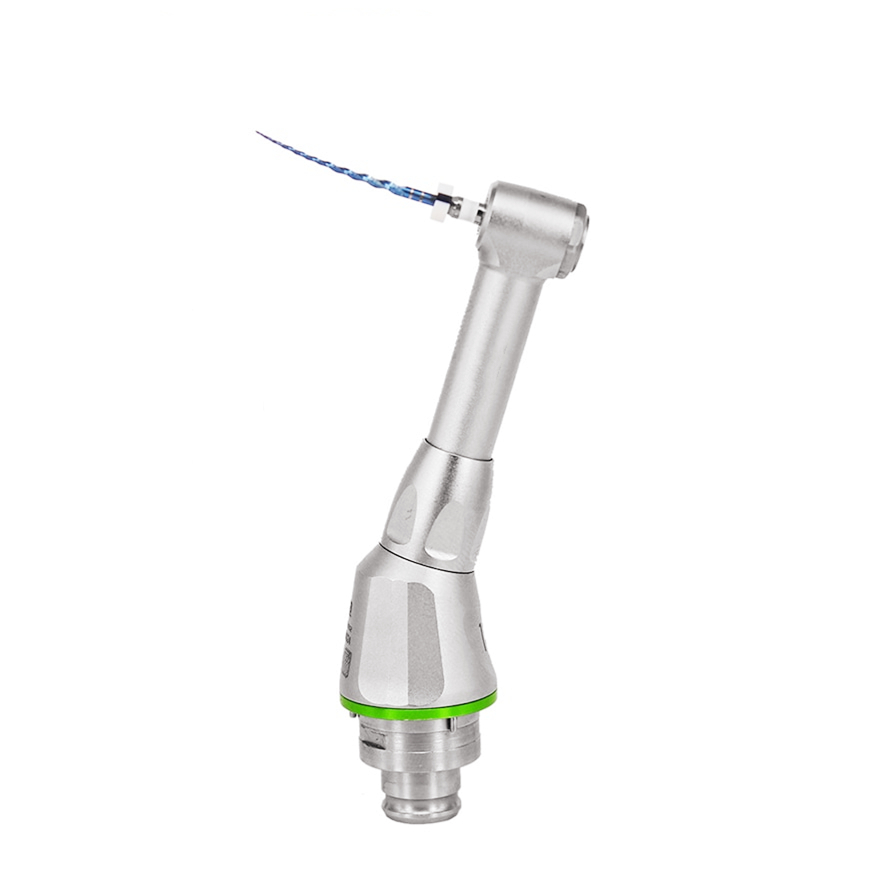
- Air-driven low-speed handpiece
The air-driven handpiece costs low, and it is the most common dental handpiece in the market. In the low-speed air-driven handpiece, there is a turbine motor that operates at a speed of 22,0000-27,000 RPM. It is mainly used for cleaning, polishing, endodontic procedures, and carries removal.
If you are looking for a cost-effective option, then the air-driven slow-speed handpiece is something you should try. It is considered the popular option for the majority of the treatment, and also it offers many benefits both in size and weight.
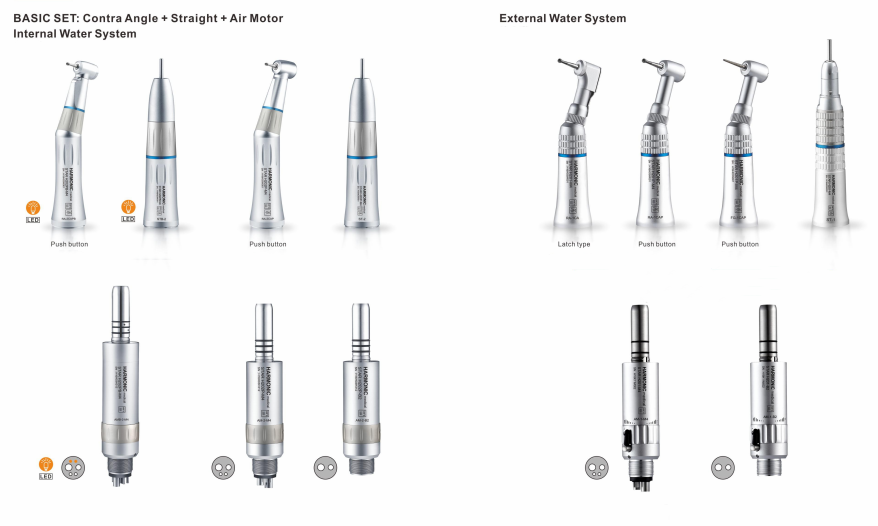
Recommended products for slow-speed handpieces:
If you are planning to start a dental office or laboratory, then a handpiece is the one most important thing to consider. You will find all types of dental lab handpieces in the Dental Lab Shop, a leading distributor of all kinds of dental supplies and equipment which you can get at a reasonable price.
Here are some recommended products of slow-speed handpieces from the Dental Lab Shop;
- Slow speed handpiece
This slow-speed handpiece from the Dental Lab Shop comes with great technical features as it consists of a low-speed contra-angle and a low-speed straight handpiece. This handpiece operates at an rpm of 22.000 to 27.000. As the bur of the handpiece rotates the speed can be controlled and also the heat produced during the procedure is less fierce.
You can use this handpiece for a longer time, as it comes with an external cooling system so can be used for a longer time. It will produce minimal noise and is ergonomically stable and highly efficient.
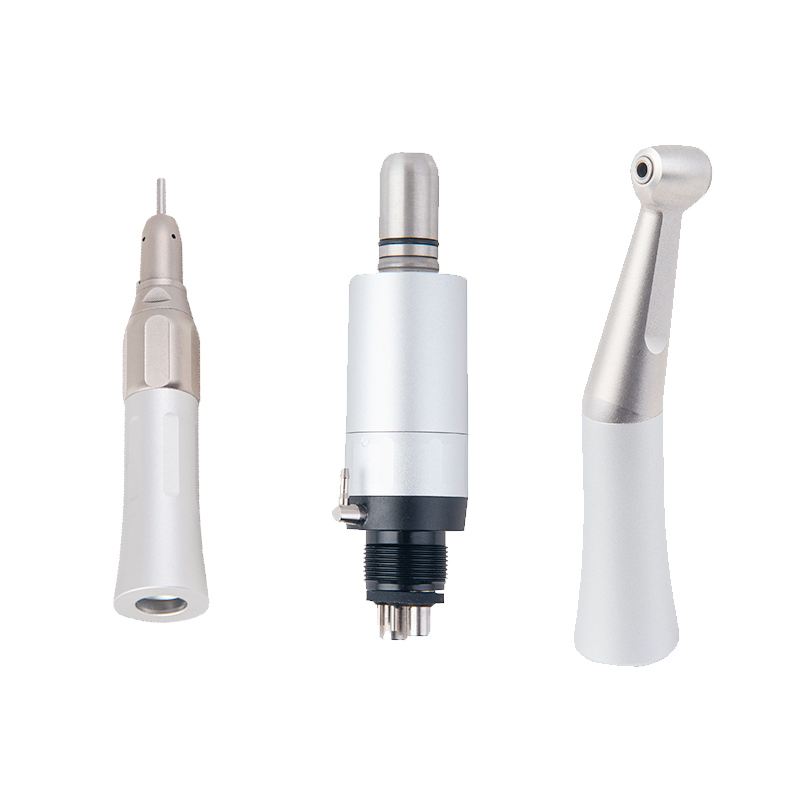
- Portable brushless handpiece motor
This type of portable brush micromotor dentist is mainly used for surgical dental treatment. It has an LED motor so it offers the fast and efficient cutting ability. On the other hand, the design of the instrument also makes the handpiece more portable and comfortable to handle.
Depending on the use, the speed of the equipment can be adjusted as it comes in high, low, and medium speeds. It won’t produce any noise, and also it helps to employ higher torque. This is a brushless micromotor so there won’t be any chance of changing the carbon brushes, which is another advantage.
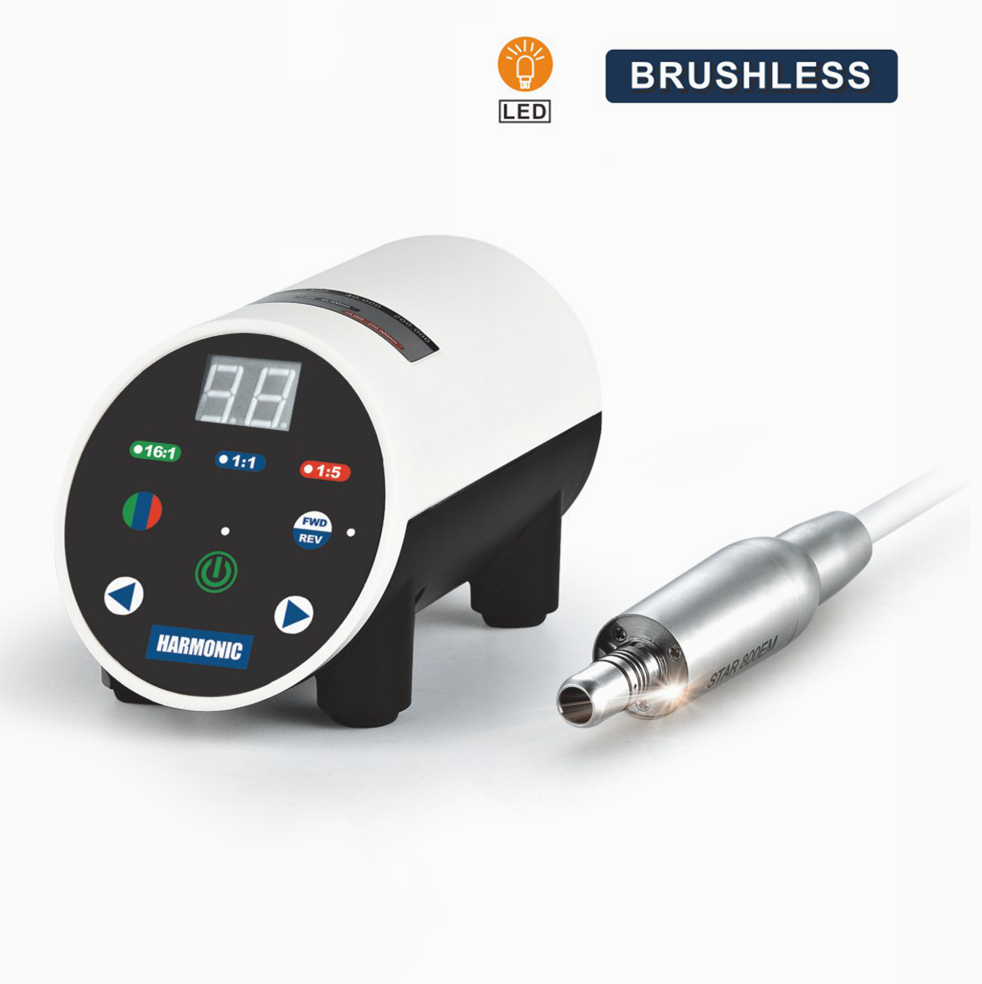
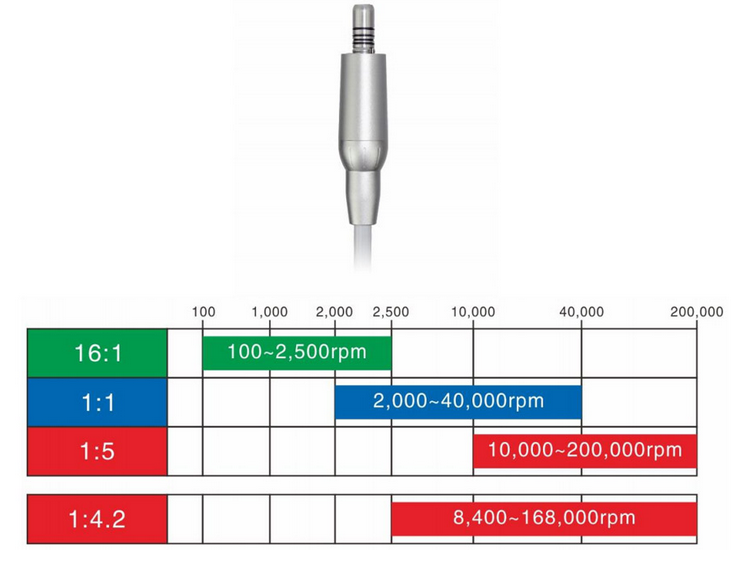
Bottom Line:
Similar to the high-speed handpiece, the low-speed handpiece is also used commonly used in the dentistry field, and even though it is operating slower than the high-speed handpiece, there will be less need for cooling the tooth with air and water spray. The low-speed handpiece maintains the international standard backends when compared to the high-end one.
-
 Obturation Pen for Root Canal Therapy
Obturation Pen for Root Canal Therapy -
 3D Obturator Handpiece Filling System
3D Obturator Handpiece Filling System -
 VersaCut – Advanced Saw Handpieces for Precision Dental Cutting
VersaCut – Advanced Saw Handpieces for Precision Dental Cutting -
 Mini Head Handpiece For Child, Triple Spray
Mini Head Handpiece For Child, Triple Spray -
 Intraoral Camera Handpiece
Intraoral Camera Handpiece -
 Air Turbine Handpiece Anti Retraction
Air Turbine Handpiece Anti Retraction -
 Contra-angled Handpiece Accessories | KaVo Compatibility
Contra-angled Handpiece Accessories | KaVo Compatibility -
 Endodontic Activator
Endodontic Activator -
 Handpiece Set
Handpiece Set -
 Wrench Handpiece NSK Compatible
Wrench Handpiece NSK Compatible -
 Speed 16:1 Endodontic Handpiece
Speed 16:1 Endodontic Handpiece -
 Straight 1:1 Restorative Handpiece
Straight 1:1 Restorative Handpiece -
 High Speed Hand-piece Air Driven Series,Fit NSK Fiber Optic Coupler
High Speed Hand-piece Air Driven Series,Fit NSK Fiber Optic Coupler -
 Fiber Optic Hand piece-KaVo Multiflex Quick Coupling System
Fiber Optic Hand piece-KaVo Multiflex Quick Coupling System -
 Endo Handpiece For Apex Locator
Endo Handpiece For Apex Locator -
 45° Contra-angle Handpiece
45° Contra-angle Handpiece -
 Surgical Straight Handpieces
Surgical Straight Handpieces -
 Contra angle Endo Handpiece
Contra angle Endo Handpiece -
 Red 1:5 Increasing Speed Handpiece
Red 1:5 Increasing Speed Handpiece -
 4:1 Contra-angle Hand piece
4:1 Contra-angle Hand piece -
 Air Abrasion Handpiece
Air Abrasion Handpiece -
 Slow Speed Handpiece
Slow Speed Handpiece -
 20:1 Reduction Contra Angle Handpiece
20:1 Reduction Contra Angle Handpiece -
 Surgical Handpiece Dental Implant
Surgical Handpiece Dental Implant -
 LED Light Dental Handpiece High Speed
LED Light Dental Handpiece High Speed -
 Dental Handpiece Cartridge
Dental Handpiece Cartridge

